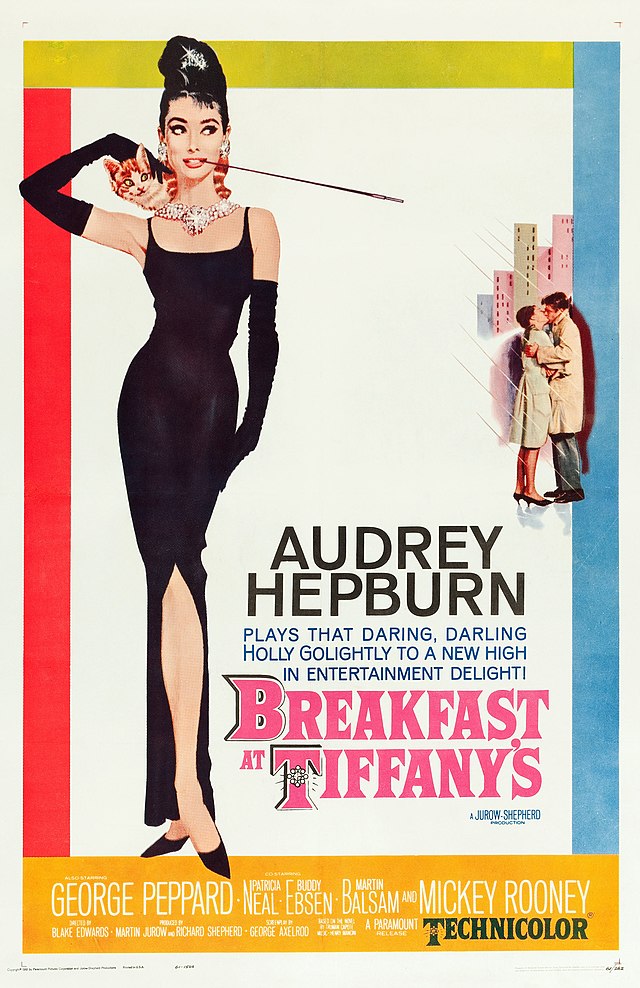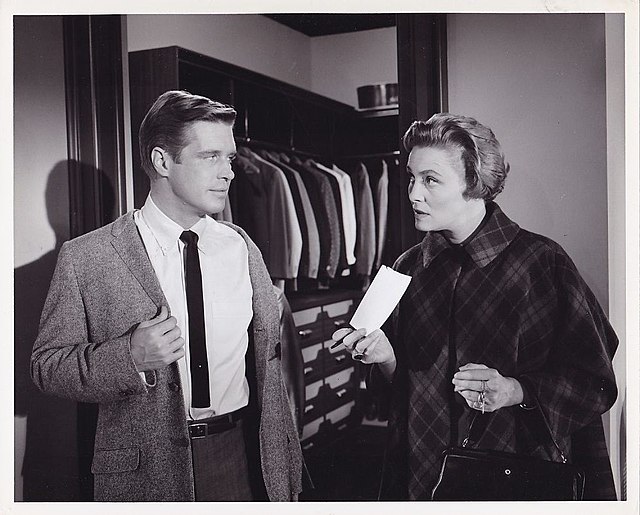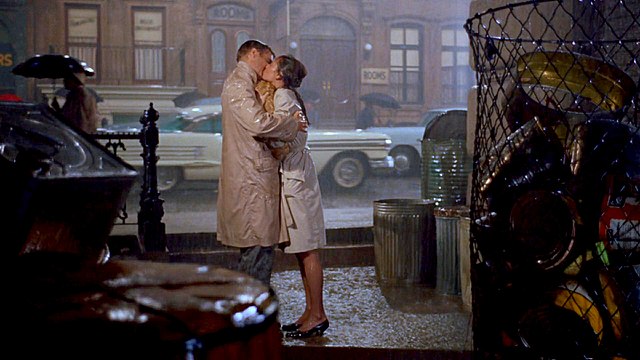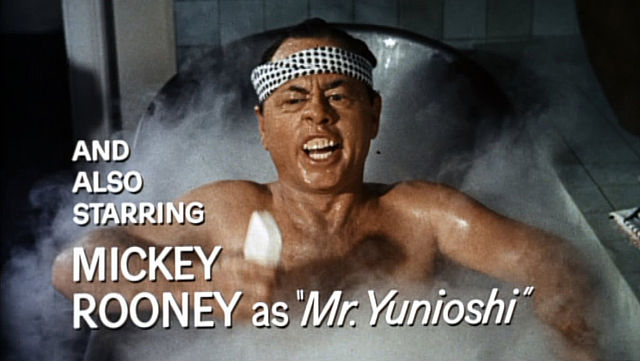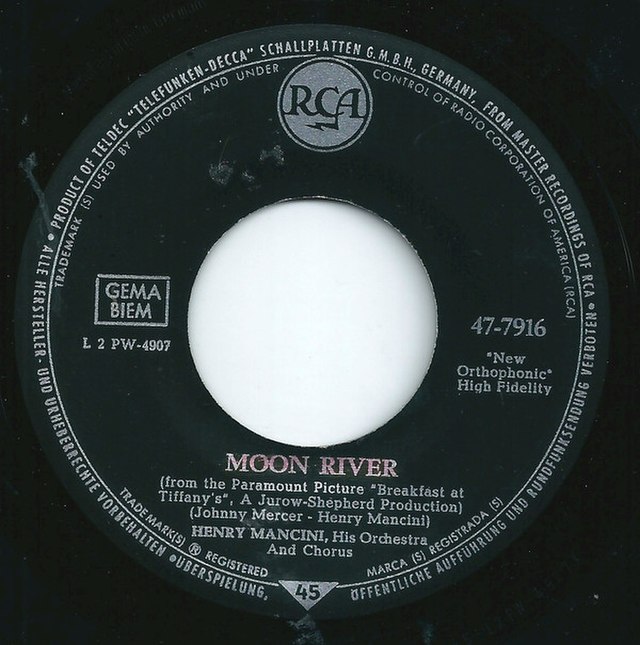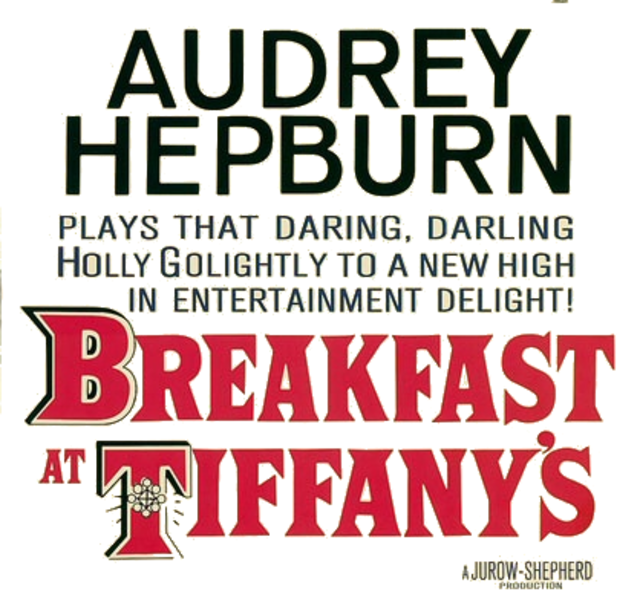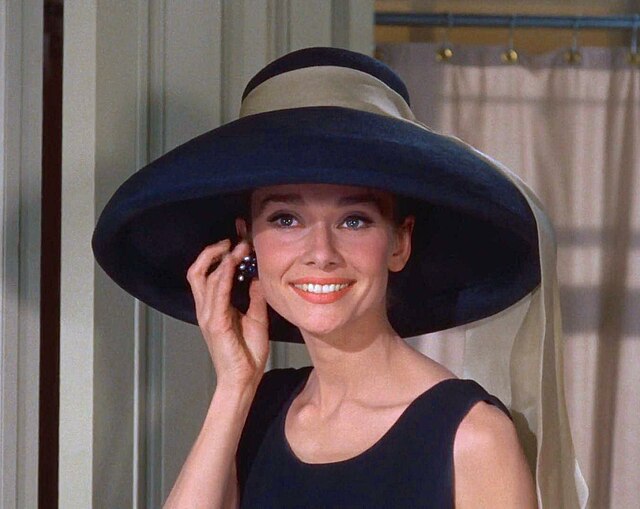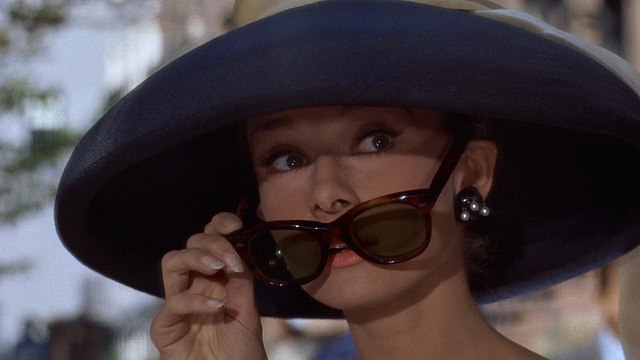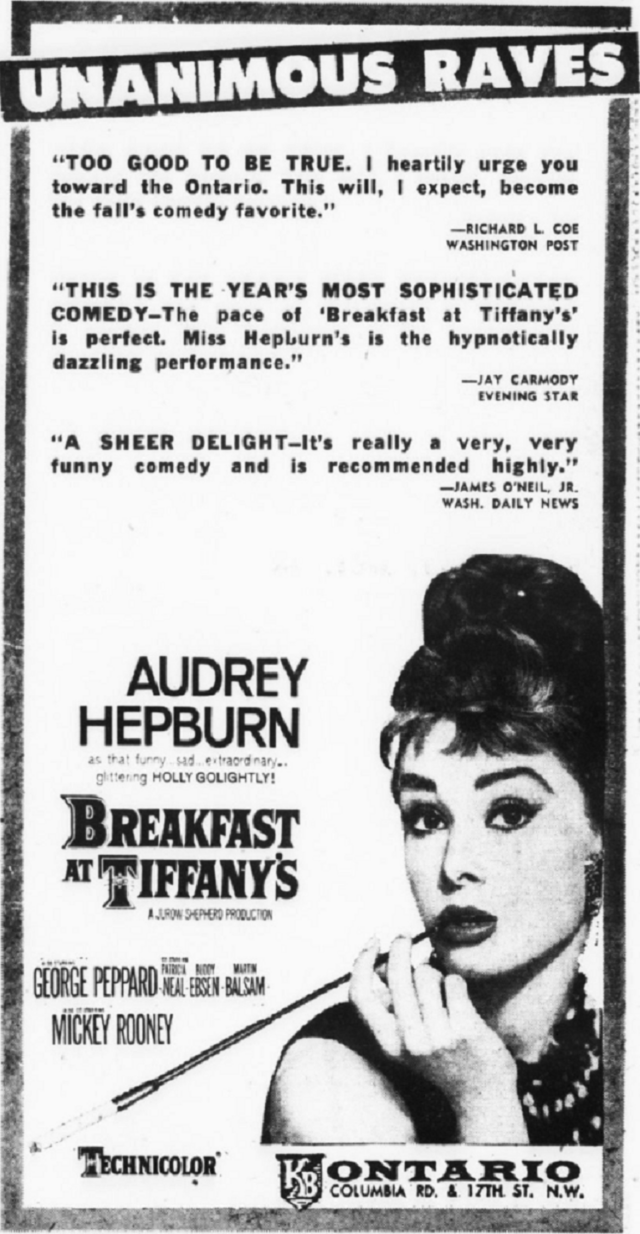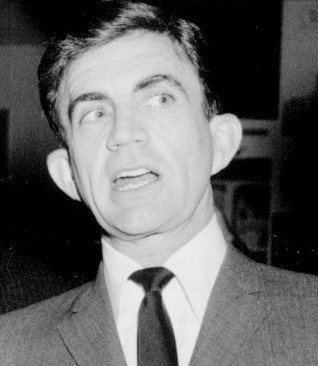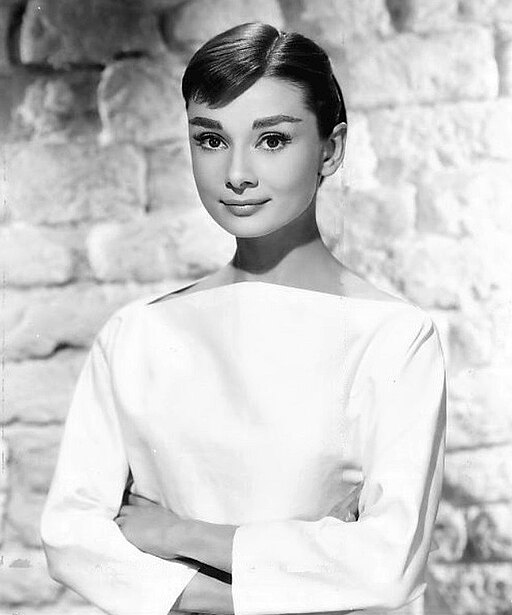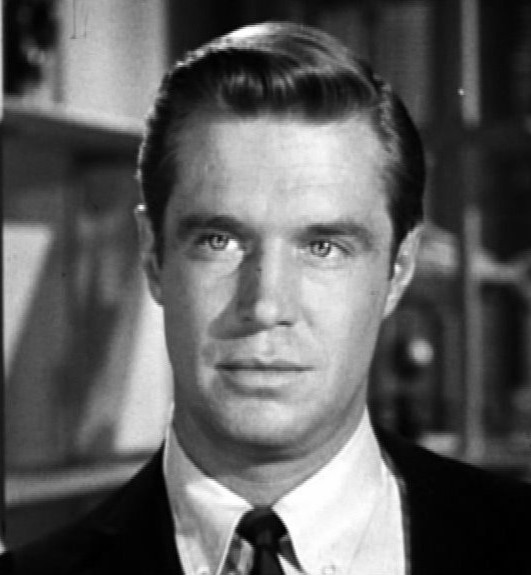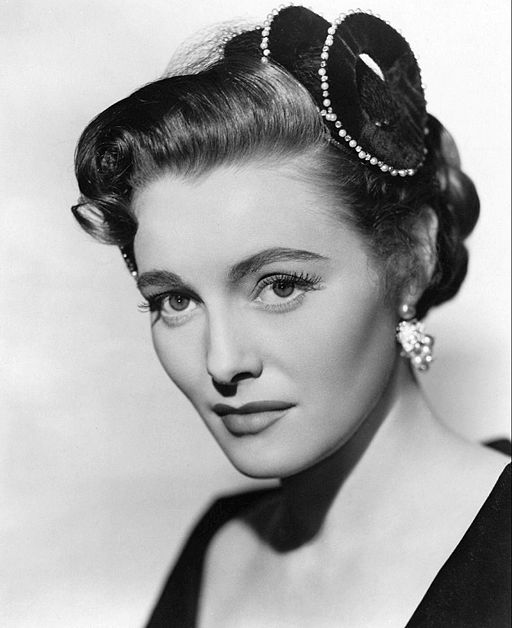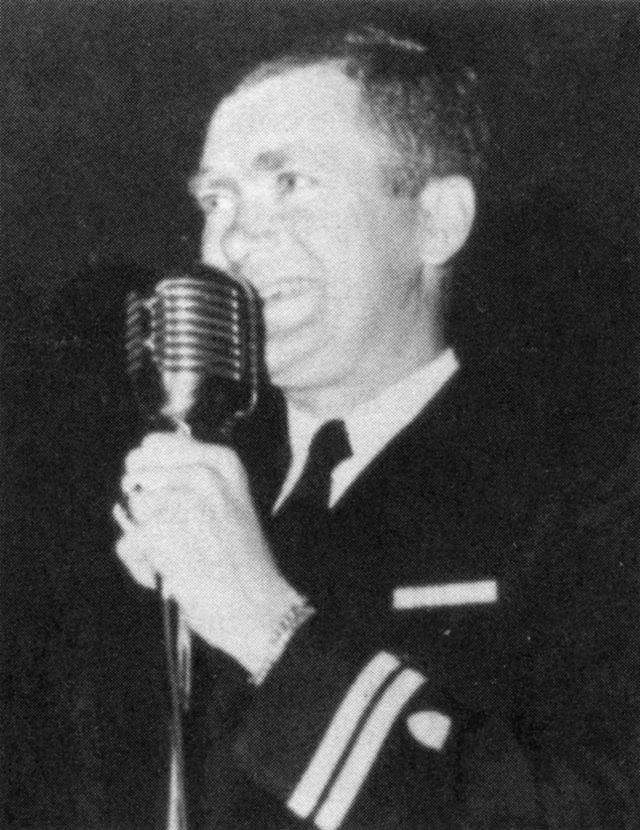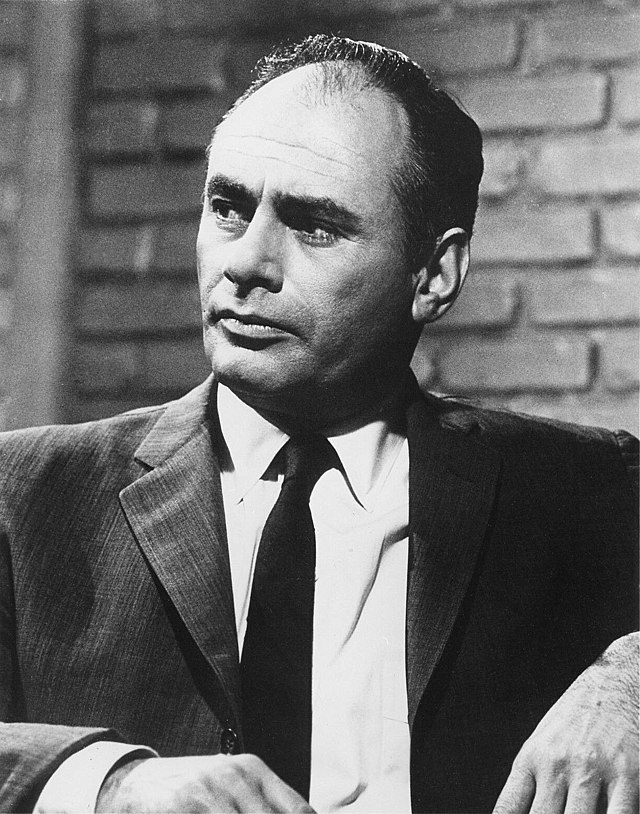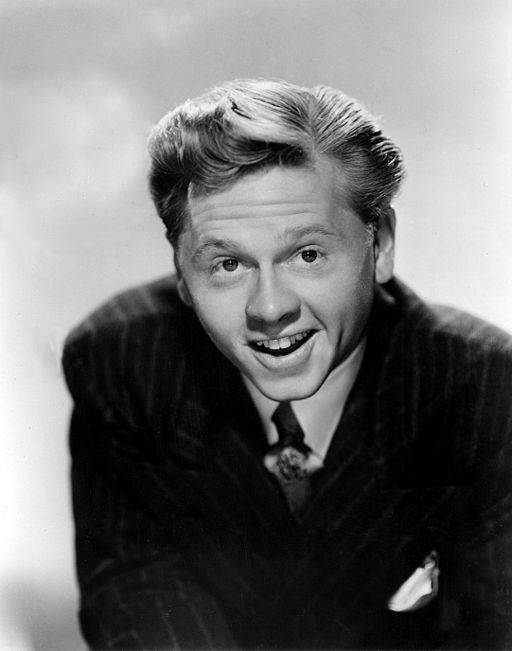Breakfast at Tiffany's - 1961
back| Released by | Paramount Pictures |
| Director | Blake Edwards |
| Producer | Martin Jurow and Richard Shepherd |
| Script | George Axelrod (based on the novella by Truman Capote) |
| Cinematography | Franz Planer |
| Music by | Henry Mancini |
| Running time | 115 minutes |
| Film budget | $2.5 million |
| Box office sales | $14 million |
| Main cast |
Breakfast at Tiffany’s
The Iconic Style Movie from the 60s
Breakfast at Tiffany's (1961), directed by Blake Edwards, follows Holly Golightly, a charming yet enigmatic New York socialite, played by Audrey Hepburn. The film explores themes of identity, loneliness, and love as Holly navigates relationships and her pursuit of a wealthy lifestyle.
Hepburn’s portrayal of Holly, paired with iconic fashion moments like the little black dress and oversized sunglasses, cemented her status as a style icon. The film's blend of romance, comedy, and drama, coupled with its memorable score featuring "Moon River," left a lasting cultural impact. Despite some controversial elements, Breakfast at Tiffany's remains a beloved classic, influencing fashion and film for decades.
Related
Breakfast at Tiffany’s – 1961
Summary and Analysis
Breakfast at Tiffany's is a romantic comedy-drama that tells the story of Holly Golightly, a young and eccentric socialite in New York City, played by Audrey Hepburn. The film opens with the iconic scene of Holly, dressed in a stunning black gown and pearls, standing outside Tiffany & Co., a luxury jewelry store, in the early morning, eating a croissant and drinking coffee. This image sets the tone for the character of Holly, who is a woman of contrasts—glamorous yet vulnerable, sophisticated yet naïve.
Holly lives in a small apartment and spends her days engaging in a lifestyle that involves attending lavish parties, mingling with wealthy men, and dreaming of a life of luxury. She is known for her carefree attitude and her refusal to be tied down by commitments, whether they be romantic or otherwise. Holly’s primary goal in life is to find a rich man to marry, which she views as her ticket out of her relatively modest existence.
Paul Varjak, played by George Peppard, is a struggling writer who moves into Holly's building. He becomes intrigued by Holly's unusual lifestyle and complex personality. Paul himself is in a complicated situation; he is financially supported by an older woman named Mrs. Emily Eustace "2E" Failenson (played by Patricia Neal), with whom he is having an affair. As Paul and Holly become friends, Paul learns more about Holly’s past, including her previous marriage to a much older man, Doc Golightly (Buddy Ebsen), whom she left to pursue a new life in New York.
Holly’s relationship with Paul deepens over time, and she begins to reveal more of her true self—her fears, dreams, and insecurities. Despite her outward confidence, Holly is deeply afraid of being vulnerable and losing her independence. This fear leads her to push people away, including Paul, whom she begins to develop feelings for.
The turning point of the film comes when Holly receives news that her brother, Fred, whom she deeply loves, has died in the army. Devastated by the loss, Holly’s carefree façade crumbles, revealing the pain and loneliness she has been hiding. In the midst of her grief, Holly plans to marry a wealthy Brazilian man, José da Silva Pereira (played by José Luis de Vilallonga), in the hope of escaping her troubles.
However, Paul confronts Holly, urging her to stop running away from her problems and to face the reality of her emotions. In a climactic scene, Paul expresses his love for Holly, and she is forced to confront her own feelings. The film ends with Holly finally realizing that true happiness cannot be found in material wealth or social status, but in genuine human connection. In the final moments, she and Paul share a kiss in the rain, symbolizing Holly’s acceptance of love and her willingness to open herself up to it.
Analysis
Breakfast at Tiffany's is a film that explores themes of identity, loneliness, and the pursuit of happiness. At the heart of the film is Holly Golightly, a character who embodies both the allure and the tragedy of the glamorous lifestyle she leads. Holly is a woman who is constantly reinventing herself, trying to escape her past and create a new identity that fits her ideal of sophistication and success. However, beneath her polished exterior, she is a deeply lonely and insecure person, haunted by her past and fearful of her future.
The film’s setting in New York City is significant, as the city represents both opportunity and isolation. For Holly, New York is a place where she can live out her fantasies, but it is also a place where she feels profoundly disconnected from the world around her. Her visits to Tiffany & Co., a symbol of luxury and permanence, reflect her longing for stability and security, which she believes can be achieved through wealth.
Paul Varjak serves as a foil to Holly, representing a more grounded and realistic perspective on life. Unlike Holly, Paul struggles with his own identity as a writer who has yet to find success. His relationship with Holly forces him to confront his own insecurities and to see beyond the surface of her glamorous persona. Through Paul, the film suggests that true happiness comes from embracing one’s authentic self and forming meaningful connections with others.
The film also addresses the theme of love, particularly the tension between romantic ideals and the realities of relationships. Holly’s initial view of love is transactional—she sees marriage as a means to an end, a way to achieve financial security. However, as the film progresses, she learns that love cannot be bought or forced; it must be genuine and based on mutual respect and understanding. Paul’s love for Holly is unconditional, and it is this love that ultimately helps her to see the value in being true to herself and opening her heart to others.
Breakfast at Tiffany's is notable for its stylish direction by Blake Edwards, who blends elements of comedy, drama, and romance to create a film that is both entertaining and thought-provoking. The film’s score, composed by Henry Mancini, includes the iconic song "Moon River," which has become synonymous with the movie and its themes of longing and nostalgia.
While the film is widely regarded as a classic, it is not without its controversies, particularly the portrayal of Mr. Yunioshi, a Japanese character played by Mickey Rooney in an exaggerated and offensive manner. This aspect of the film has been criticized for its racial insensitivity, and it serves as a reminder of the problematic representations that were common in Hollywood during the time.
Overall, Breakfast at Tiffany's is a film that has endured as a cultural touchstone, largely due to Audrey Hepburn’s unforgettable performance as Holly Golightly. The character of Holly has become an icon of fashion and film, representing the complexities of modern womanhood and the search for identity and belonging. The film’s exploration of these themes, combined with its elegant style and memorable performances, has secured its place as one of the most beloved films in cinema history.
Classic Trailer Breakfast at Tiffany's:
Full Cast:
Main Cast:
- Audrey Hepburn as Holly Golightly
- George Peppard as Paul Varjak
- Patricia Neal as Mrs. Emily Eustace "2E" Failenson
- Buddy Ebsen as Doc Golightly
- Martin Balsam as O. J. Berman
- Mickey Rooney as Mr. Yunioshi
- José Luis de Vilallonga as José da Silva Pereira
- John McGiver as Tiffany's Salesman
- Dorothy Whitney as Mag Wildwood
- Stanley Adams as Rusty Trawler
- Elvia Allman as Librarian
- Alan Reed as Sally Tomato
- Beverly Powers (credited as Beverly Hills) as Stripper
Supporting Cast:
- Mel Blanc as Holly’s Drunk Visitor (voice, uncredited)
- Henry Beckman as Police Lieutenant
- Orangey as Cat
- Claude Stroud as Sid Arbuck
- Orangey (the cat actor) as "Cat," Holly’s pet
Blake Edwards’ Direction: A Delicate Balance of Style and Substance
Blake Edwards' direction in Breakfast at Tiffany's is a masterclass in balancing style, tone, and narrative, resulting in a film that is both visually captivating and emotionally resonant. Edwards, known for his versatility in handling different genres, approached this film with a nuanced understanding of its complex characters and the unique blend of comedy, romance, and drama that defines its story.
Visual Style and Atmosphere
Edwards' direction is notable for its sophisticated visual style, which perfectly complements the glamorous world inhabited by Holly Golightly. From the opening scene—where Holly gazes longingly into the windows of Tiffany & Co. while the early morning streets of New York are bathed in soft light—Edwards establishes a dreamy, almost fairy-tale-like atmosphere. The film is shot with a refined elegance, with every frame carefully composed to enhance the film's themes of longing and the pursuit of beauty.
The use of New York City as a backdrop is one of Edwards’ key directorial achievements. He captures the city’s dual nature—its bustling, chaotic energy and its moments of quiet solitude. This duality mirrors Holly’s own life, filled with glamorous parties and moments of deep personal loneliness. Edwards’ ability to use the city not just as a setting but as a character in its own right adds depth to the film, making New York City an integral part of the story’s emotional landscape.
Tone Management
One of the most challenging aspects of Breakfast at Tiffany's is its tonal shifts, moving from light-hearted comedy to moments of poignant drama. Edwards handles these transitions with remarkable skill, ensuring that the film never feels disjointed. He maintains a consistent emotional throughline, even as the film oscillates between Holly’s whimsical antics and her more serious, introspective moments.
Edwards’ direction ensures that the film’s humor never undermines its emotional weight. The comedic elements, such as Holly’s quirky behavior and her interactions with eccentric characters like Mr. Yunioshi, are played with a light touch, adding charm without descending into farce. At the same time, Edwards allows the more dramatic scenes—such as Holly’s reaction to the news of her brother’s death or her confrontation with Paul about her future—to breathe and resonate, giving them the space needed to impact the audience.
Character Development and Performances
Blake Edwards’ direction is also crucial in shaping the performances of the film’s actors, particularly Audrey Hepburn as Holly Golightly. Edwards draws out a performance from Hepburn that is both iconic and deeply human. He guides Hepburn to capture Holly’s complexity—her vulnerability beneath the glamorous exterior, her fear of intimacy, and her relentless search for identity and belonging.
Edwards’ direction ensures that the audience sympathizes with Holly, despite her flaws. He presents her as a fully realized character rather than a mere caricature of a socialite. This depth of characterization is a testament to Edwards’ ability to work closely with his actors, allowing them to explore the nuances of their roles while maintaining the film’s overall tone and narrative direction.
George Peppard’s portrayal of Paul Varjak also benefits from Edwards’ direction. Edwards encourages a restrained and understated performance from Peppard, which contrasts effectively with Hepburn’s more expressive portrayal of Holly. This dynamic allows the relationship between Paul and Holly to develop naturally on screen, with Paul serving as a grounding influence on Holly’s more flighty nature.
Narrative Pacing and Structure
Edwards shows a keen sense of pacing throughout Breakfast at Tiffany's. The film unfolds at a leisurely yet deliberate pace, allowing the audience to fully immerse themselves in Holly’s world. Edwards avoids rushing through key emotional beats, instead giving the characters room to grow and the story time to unfold organically.
The structure of the film, under Edwards’ direction, is carefully designed to build towards the emotional climax. Each scene serves a purpose, whether in developing the central relationship between Holly and Paul or in revealing more about Holly’s past and her inner struggles. Edwards’ control over the narrative ensures that the film remains engaging from start to finish, with each moment contributing to the overall emotional arc.
Cultural Impact and Legacy
Edwards’ direction of Breakfast at Tiffany's has left an indelible mark on cinema, contributing to the film’s enduring legacy. The film’s blend of romance, comedy, and drama, along with its iconic style, has influenced countless filmmakers and remains a touchstone in popular culture. Edwards’ ability to craft a film that is both timeless and of its time speaks to his directorial prowess.
However, it is also important to acknowledge the film’s controversial aspects, particularly the portrayal of Mr. Yunioshi by Mickey Rooney. This character has been widely criticized for its racial insensitivity, and while Edwards was working within the norms of Hollywood at the time, this aspect of the film is a blemish on its otherwise lauded direction.
Conclusion
Blake Edwards’ direction in Breakfast at Tiffany's is a brilliant blend of visual style, narrative control, and emotional depth. He masterfully balances the film’s diverse elements, creating a cinematic experience that is as stylish as it is heartfelt. Through his direction, Edwards not only brought Truman Capote’s novella to life but also created a film that continues to resonate with audiences decades after its release. His work on this film solidifies his reputation as a director capable of navigating complex characters and themes with elegance and insight.
Audrey Hepburn’s Performance: An Iconic Portrayal of Complexity and Charm
Audrey Hepburn's portrayal of Holly Golightly in Breakfast at Tiffany's is one of the most iconic performances in cinematic history. Hepburn’s interpretation of the character has become synonymous with elegance, grace, and a unique blend of vulnerability and sophistication. Her performance is a key element that has contributed to the film's lasting legacy and cultural impact.
Embodiment of Holly Golightly
Hepburn’s performance is remarkable for how she embodies Holly Golightly, a character who is both captivating and elusive. From the moment she appears on screen, dressed in the now-legendary black Givenchy dress, with her hair perfectly coiffed and adorned with pearls, Hepburn commands the viewer’s attention. Her physical presence is mesmerizing, exuding an effortless charm that is both ethereal and relatable.
Hepburn’s Holly is a character of contrasts. On the surface, she is the epitome of urban chic—a woman who navigates New York City’s high society with ease, attending glamorous parties, and surrounding herself with wealthy men. However, Hepburn infuses Holly with an underlying sense of fragility and depth, revealing that beneath the stylish exterior lies a woman who is searching for herself and grappling with loneliness.
Balancing Whimsy and Vulnerability
One of the most striking aspects of Hepburn’s performance is her ability to balance Holly’s whimsical, carefree persona with moments of genuine vulnerability. Hepburn brings a lightness to the role, making Holly’s quirks—such as her habit of getting lost in daydreams, or her playful avoidance of reality—endearing rather than superficial. This playful side of Holly is perhaps best captured in scenes like her impromptu visit to Tiffany & Co., where she naively asks about purchasing something inexpensive, or her decision to spend a day doing things she’s never done before with Paul, including shoplifting and visiting the library.
However, it is in the quieter, more introspective moments that Hepburn truly shines. She deftly conveys Holly’s inner turmoil, particularly her fear of being vulnerable and her reluctance to form deep connections. This is most evident in the scenes where Holly reflects on her past, including her complicated relationship with her brother Fred, and her confession to Paul that she is "scared to death" of being trapped in a life she doesn’t want. Hepburn’s expressive eyes and subtle facial expressions communicate a depth of emotion that adds layers to Holly’s character, making her more than just a glamorous figure, but a deeply human one.
Creating an Icon
Audrey Hepburn’s portrayal of Holly Golightly transcends the film itself, becoming a cultural icon. Her performance is not just about acting—it’s about creating an image that has resonated across decades. Hepburn’s Holly is an emblem of 1960s sophistication, yet her appeal is timeless. The character’s style, grace, and complex personality have influenced fashion, film, and popular culture in profound ways.
Hepburn’s delivery of the film’s most memorable lines, such as "I’m like Cat here. We’re a couple of no-name slobs. We belong to nobody, and nobody belongs to us," is both poignant and matter-of-fact, highlighting Holly’s simultaneous desire for independence and her yearning for belonging. Hepburn’s distinctive voice, with its elegant, slightly breathy quality, adds to the character’s unique charm.
Chemistry with Co-Stars
Hepburn’s chemistry with her co-stars, particularly George Peppard (Paul Varjak), is another highlight of her performance. The relationship between Holly and Paul is central to the film, and Hepburn ensures that this connection feels genuine and dynamic. She plays off Peppard’s more restrained performance, allowing their characters’ relationship to evolve naturally from friendship to something deeper. Hepburn’s ability to create a palpable chemistry on screen enhances the emotional impact of the film’s climax, where Holly finally opens herself up to love.
Breaking Stereotypes
Hepburn’s performance also challenges and redefines the traditional female roles of the time. Holly is not the typical love interest or damsel in distress; she is a complex, independent woman with her own goals and desires. Hepburn brings a modern sensibility to the role, making Holly a character who is relatable even today. She captures the essence of a woman who is trying to navigate her identity and place in the world, while also yearning for connection and stability.
Hepburn’s Holly Golightly is both a product of her time and a timeless character. Through her nuanced portrayal, Hepburn elevates Holly beyond the pages of Truman Capote’s novella, creating a character that is as iconic as she is complex. She gives Holly a voice, a presence, and a soul, making her one of the most memorable characters in film history.
Conclusion
Audrey Hepburn’s performance in Breakfast at Tiffany's is a masterful blend of charm, depth, and emotional authenticity. She takes a character that could have easily been a superficial socialite and turns her into a multi-dimensional, relatable figure. Hepburn’s ability to convey both the lightness and the shadows in Holly’s life makes her portrayal not just iconic but deeply moving. Her performance remains a defining moment in her career and a benchmark for actresses playing complex female roles. Through her portrayal of Holly Golightly, Hepburn not only captivated audiences in 1961 but continues to influence and inspire generations of viewers and performers alike.
Notable Film Lines from Breakfast at Tiffany’s:
Holly Golightly:
"You know those days when you get the mean reds?"
- Context: Holly explains to Paul her feelings of anxiety and fear that she refers to as the "mean reds," which are more intense than the "blues." This quote highlights Holly's underlying vulnerability and the emotional complexity beneath her glamorous exterior.
Holly Golightly:
"I'm like Cat here. We're a couple of no-name slobs. We belong to nobody, and nobody belongs to us."
- Context: Holly says this to Paul during a pivotal moment in the film, reflecting her fear of attachment and her desire to remain independent, even though deep down she craves connection and belonging.
Holly Golightly:
"I don't want to own anything until I find a place where me and things go together. I'm not sure where that is, but I know what it is like. It's like Tiffany's."
- Context: Holly expresses her sense of displacement and her search for a place where she feels truly at home. Tiffany’s, the luxury jewelry store, represents a symbol of stability and comfort in her otherwise chaotic life.
Paul Varjak:
"People don't belong to people."
- Context: Paul says this to Holly during a heated argument, challenging her perspective on relationships and ownership. This quote encapsulates the film's exploration of personal freedom versus the need for connection.
Holly Golightly:
"Do you think she's talented, deeply and importantly talented?"
- Context: Holly asks this question about herself in a self-reflective moment. It reveals her insecurities and her yearning to be seen as more than just a beautiful socialite.
Paul Varjak:
"You call yourself a free spirit, a 'wild thing,' and you're terrified somebody's gonna stick you in a cage. Well baby, you're already in that cage. You built it yourself."
- Context: Paul confronts Holly about her fear of commitment and her self-imposed isolation. This quote is significant because it pushes Holly to confront the truth about her own behavior and her fear of intimacy.
Holly Golightly:
"I'll never let anybody put me in a cage."
- Context: This is Holly’s response to Paul’s accusation that she is already in a metaphorical cage. It reflects her deep-seated fear of losing her independence and being confined by societal expectations or personal relationships.
Holly Golightly:
"Thursday! It can't be! It's too gruesome!"
- Context: Holly exclaims this line when she realizes it's Thursday, a day she finds particularly dreadful. This quote is a light-hearted moment that shows Holly’s quirky, dramatic personality.
Holly Golightly:
"Promise me one thing: don't take me home until I'm drunk—very drunk indeed."
- Context: Holly says this during a night out with Paul, underscoring her desire to escape reality through alcohol and her attempt to maintain her carefree, uninhibited persona.
Holly Golightly:
"Moon River, wider than a mile, I'm crossing you in style someday..."
- Context: Although this is a lyric from the song "Moon River," sung by Audrey Hepburn in the film, it has become one of the most iconic moments. The song, and this line in particular, captures Holly’s dreams and longing for a place where she feels she truly belongs.
Breakfast at Tiffany’s Dress:
he dress worn by Audrey Hepburn in Breakfast at Tiffany's is one of the most iconic garments in cinematic history. Known simply as "the little black dress," it has become a symbol of elegance, sophistication, and timeless fashion.
Design and Creation
- Designer:
The dress was designed by Hubert de Givenchy, a close friend and frequent collaborator of Audrey Hepburn. Givenchy and Hepburn first worked together on the 1954 film Sabrina, and their professional relationship evolved into one of the most celebrated partnerships in fashion history. - The Dress:
The Breakfast at Tiffany's dress is a sleeveless, floor-length, black evening gown made of Italian satin. The dress is characterized by its minimalist design, which emphasizes clean lines and a perfect fit. The back of the dress features a dramatic, low-cut design, adding an element of allure to its otherwise simple silhouette. - Accessories:
The dress is famously accessorized with a multi-strand pearl necklace with a large, sparkling brooch, long black gloves, oversized sunglasses, and a chic updo hairstyle. These accessories, along with the dress, complete the look that has become synonymous with Audrey Hepburn's portrayal of Holly Golightly.
Symbolism and Cultural Impact
- Timeless Elegance:
The Breakfast at Tiffany's dress epitomizes the concept of the "little black dress" (LBD), a fashion staple that Coco Chanel popularized in the 1920s. The dress's simplicity and elegance make it a timeless piece that transcends trends and continues to influence fashion designers and enthusiasts worldwide. - Character Representation:
In the context of the film, the dress serves as a visual representation of Holly Golightly's character. It reflects her sophistication, her desire to project an image of glamour and independence, and her ability to maintain an air of mystery. The dress also contrasts with Holly's more vulnerable moments, highlighting the dichotomy between her outward appearance and inner emotional struggles. - Iconic Status:
The image of Audrey Hepburn standing outside Tiffany & Co. in this dress, holding a croissant and coffee, has become one of the most enduring images in popular culture. The dress has been referenced, imitated, and celebrated in countless fashion editorials, films, and advertisements.
Legacy and Influence
- Fashion Influence:
The Breakfast at Tiffany's dress has had a profound impact on fashion, cementing the little black dress as an essential item in every woman's wardrobe. Designers continue to draw inspiration from its minimalist elegance, and the dress remains a go-to reference for classic, understated glamour. - Auction and Value:
The original dress worn by Audrey Hepburn in the film was auctioned at Christie’s in London in 2006. It fetched an astonishing £467,200 (approximately $923,187 at the time), far exceeding its estimated value. The proceeds from the auction were donated to the charity City of Joy Aid, reflecting Hepburn’s own humanitarian spirit. - Cultural References:
The dress and Hepburn’s portrayal of Holly Golightly have been referenced in numerous films, television shows, and fashion campaigns. It continues to inspire both designers and audiences, maintaining its status as one of the most iconic fashion moments in cinema.
Iconic Sunglasses:
The sunglasses worn by Audrey Hepburn in Breakfast at Tiffany's are another key element of the film's iconic fashion. These sunglasses, along with her little black dress, have become an enduring symbol of style and sophistication.
Design and Brand
- Designer:
The sunglasses worn by Audrey Hepburn in Breakfast at Tiffany's were designed by Oliver Goldsmith, a British eyewear designer known for creating stylish, high-quality frames. Oliver Goldsmith was a prominent name in the fashion world during the 1950s and 1960s, and his designs were favored by many celebrities of the time. - Style:
The sunglasses are often referred to as "Manhattan" sunglasses, named after the model created by Oliver Goldsmith. They feature large, oversized frames that provide a bold, dramatic look, perfectly complementing Hepburn's chic and sophisticated character. The frames are tortoiseshell in color, with a subtle cat-eye shape that adds to their elegant and timeless appeal. - Lens:
The lenses of the sunglasses are a dark brown, providing a sharp contrast to the tortoiseshell frames. The dark lenses add an air of mystery to Hepburn’s character, Holly Golightly, emphasizing her enigmatic and elusive nature.
Cultural Significance
- Iconic Status:
Just like the little black dress, the sunglasses have become synonymous with Audrey Hepburn's portrayal of Holly Golightly. The oversized frames contributed to the distinctive, fashionable look that made Hepburn an icon of style. The image of Holly wearing these sunglasses while casually sipping coffee and gazing into the windows of Tiffany & Co. has become one of the most recognizable moments in film history. - Fashion Influence:
The Breakfast at Tiffany's sunglasses played a significant role in popularizing oversized eyewear, a trend that continues to this day. The bold, large frames that Hepburn wore in the film set a standard for fashionable sunglasses, inspiring countless imitations and designs in the years that followed. - Symbolism:
The sunglasses serve as more than just a fashion accessory in the film; they are also a symbolic extension of Holly Golightly’s character. The oversized frames help Holly maintain an air of mystery and detachment, allowing her to keep the world at a distance while projecting a sense of confidence and sophistication. They are a shield that Holly uses to protect herself from the harsh realities of her life and the vulnerabilities she tries to hide from others. - Timeless Appeal:
Decades after the film’s release, the Breakfast at Tiffany's sunglasses continue to be celebrated and replicated. Their timeless design makes them a perennial favorite among fashion enthusiasts, and they are often cited as one of the most iconic pairs of sunglasses in cinematic history.
Legacy
- Continued Popularity:
The sunglasses have maintained their popularity over the years, not just as a nostalgic accessory but as a continued influence on contemporary eyewear fashion. Modern brands frequently release their own versions of the "Manhattan" sunglasses, drawing inspiration from the original design by Oliver Goldsmith. - Cultural References:
The sunglasses have been referenced in numerous fashion editorials, advertisements, and films. They remain a symbol of classic Hollywood glamour and are often associated with the elegance and sophistication of the 1960s. - Auction and Collectability:
Like many of the iconic items associated with Breakfast at Tiffany's, replicas and similar styles of the sunglasses have been highly sought after by collectors and fans of Audrey Hepburn. Authentic pairs from the era or well-crafted replicas are considered valuable pieces of fashion history.
Awards and Recognition for the Movie:
Academy Awards (Oscars) - 1962
- Won:
- Best Original Song: "Moon River" by Henry Mancini (music) and Johnny Mercer (lyrics)
- Best Original Score: Henry Mancini
- Nominated:
- Best Actress in a Leading Role: Audrey Hepburn
- Best Adapted Screenplay: George Axelrod
- Best Art Direction – Set Decoration, Color: Hal Pereira, Roland Anderson, Sam Comer, Ray Moyer
Golden Globe Awards - 1962
- Won:
- Best Actress in a Motion Picture – Comedy or Musical: Audrey Hepburn
Grammy Awards - 1962
- Won:
- Grammy Award for Best Soundtrack Album or Recording of Original Cast from a Motion Picture or Television: Henry Mancini for the soundtrack of Breakfast at Tiffany's
Writers Guild of America (WGA) Awards - 1962
- Nominated:
- Best Written American Comedy: George Axelrod
Directors Guild of America (DGA) Awards - 1962
- Nominated:
- Outstanding Directorial Achievement in Motion Pictures: Blake Edwards
British Academy of Film and Television Arts (BAFTA) Awards - 1962
- Nominated:
- Best British Actress: Audrey Hepburn (although she was actually born in Belgium, Hepburn was frequently categorized under British awards due to her upbringing and dual citizenship)
David di Donatello Awards - 1962 (Italy)
- Won:
- Best Foreign Actress: Audrey Hepburn
Laurel Awards - 1962
- Won:
- Top Female Comedy Performance: Audrey Hepburn
- Top Song: "Moon River"
- Nominated:
- Top Male Comedy Performance: George Peppard
- Top Comedy: Breakfast at Tiffany's (ranked 2nd)
National Board of Review (NBR) - 1961
- Won:
- Top Ten Films: Breakfast at Tiffany's included in the list of the year’s top ten films
New York Film Critics Circle Awards (NYFCC) - 1961
- Nominated:
- Best Actress: Audrey Hepburn (came in 3rd place)
Golden Laurel Awards - 1961
- Won:
- Best Female Comedy Performance: Audrey Hepburn
Cannes Film Festival - 1961
- Nominated:
- Palme d'Or (though the film was entered into the festival, it did not win this top prize)
American Film Institute (AFI) Recognition
- AFI's 100 Years...100 Songs: "Moon River" ranked #4
- AFI's 100 Years...100 Movie Quotes: Holly Golightly's quote "You call yourself a free spirit, a 'wild thing,' and you're terrified somebody's gonna stick you in a cage. Well baby, you're already in that cage. You built it yourself." was nominated.
Other Honors and Legacy
- The film is included in the United States National Film Registry by the Library of Congress as being "culturally, historically, or aesthetically significant."
- Audrey Hepburn’s portrayal of Holly Golightly has been widely acclaimed and continues to be recognized as one of the most iconic performances in film history.

